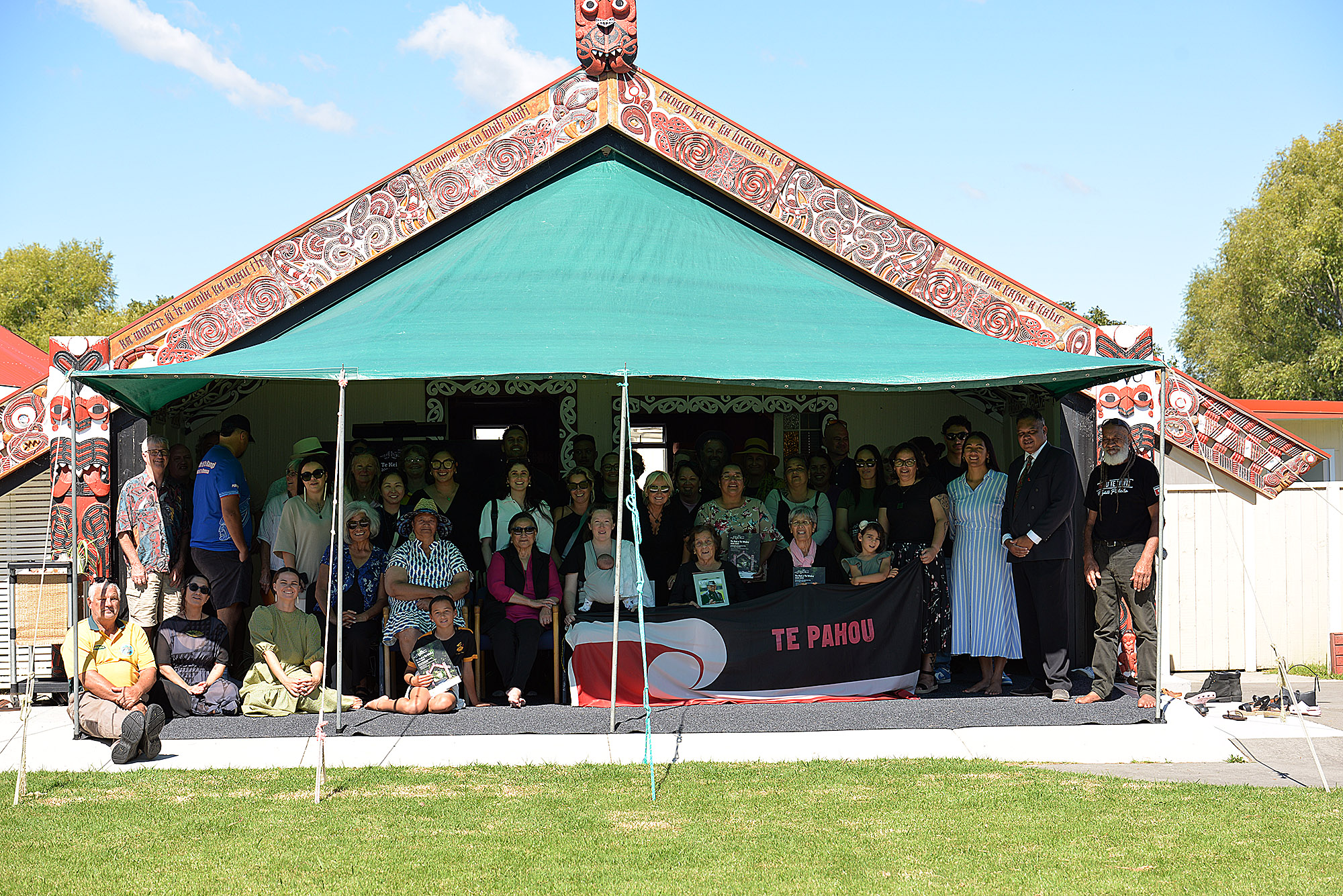Conservation management plan celebrated

ASPIRATIONAL: A new conservation management has been celebrated for the future it sets out for three Whakatāne reserves. Photos supplied
Brianna Stewart
Celebrations were held last weekend to mark the launch of a new conservation management plan for three key reserves in the Whakatāne district.
Te Kei o Te Waka sets out the aspirations of joint management committee Te Tapatoru ā Toi and guides decision making for Moutohorā Wildlife Management Reserve, Ōhope Scenic Reserve and Tauwhare Pā Scenic Reserve.
It is named after the late Te Kei Merito MNZM, who was the inaugural chair of the joint management committee and held the position for 18 years.
He was present for the first workshop held during the process; the last one he attended before his death in the subsequent months.
Te Kei’s final hopes and aspirations (ōhākī) and contributions from committee members at that first workshop formed the basis of the discussion document, which was used to consult extensively with interested parties before a draft was even written.
The plan is considered special not just for continuing Mr Merito’s legacy, but for the unique way the team approached the consultation phase and included aspirations for each reserve.
For Moutohorā, an additional classification was added of He Puna Mātauranga: A place of learning.
This classification recognises Moutohorā as a living classroom, where intergenerational knowledge can be shared, preserved and integrated into the long-term care of the island.
It aims to strengthen the relationship between tāngata whenua and taiao through mātauranga tuku iho (ancestral knowledge).
Ōhope Scenic Reserve has the additional classification of He Puna Hauropi: An ecological anchor for local biodiversity, highlighting the importance of prioritising and protecting the significant natural and ecological values of Ōhope Scenic Reserve for future generations.
The long-term care and management of the reserve will focus on ecological integrity through measures such as pest animal and plant control, habitat restoration, species protection and community education.
Tauwhare Pā Scenic Reserve has been identified as He Puna Mahara: A place of peace and remembrance.
The conservation management plan sets out how Te Tapatoru ā Toi is committed to honouring the legacy of Tauwhare Pā by preserving its historical and cultural significance while ensuring public enjoyment and access.
“This commitment will be upheld without compromising the ecological integrity of the surrounding environment, ensuring Tauwhare Pā continues to be a taonga for future generations.”
Te Tapatoru ā Toi joint management committee was born out of Ngāti Awa’s Crown settlement in 2005. It comprises Ngāti Awa and Department of Conservation representatives.
Committee chair Vincent Copeland said the plan’s launch was the culmination of nearly five years of work, and its completion marked a milestone.

Until the new plan had been officially launched, management of the reserves had to operate based on the existing nearly 17-year-old plan.
Te Tapatoru ā Toi took an innovative approach when it came to consultation on Te Kei o Te Waka, involving stakeholders at a much earlier stage than is conventional.
A discussion document was consulted on by Ngāti Awa hapū with connections to the three reserves, community groups who have worked at the sites for years, concessionaires and experts both internal and external to DoC.
Mr Copeland said it was a conscious decision to ensure the community was engaged throughout the process.
“I know sometimes in the submissions process people can feel like they haven’t really been consulted and they’re coming in at the end of the process.
“It was a great process to go through; it took a bit more time, but I think it is a great example of community involvement in the planning process.”
In the short term, there will be no change in the way the reserves are managed day to day, Mr Copeland said, but one of the aspirations of the plan is to enable Ngāti Awa to play a more active part in management of the reserves.
“I think the ambition for Uncle Te Kei was that Ngāti Awa would be actively involved in caring for these reserves on behalf of the whole community.”
He thought that in the past 20 years it has been recognised more than having iwi and hapu involved on their traditional lands is a good thing not only for the whenua, the hapu and the iwi, but also for the community.
DoC regional treaty partner strategy manager Merenia Sawrey said they wanted the conservation management plan, and the process used to produce it, to reflect the nature of the current relationship between parties.
“We wanted to make sure that we were continuing to progress a legacy that was aspirational,” she said.
Ms Sawrey said the plan set out a clear vision for enabling greater leadership for Ngāti Awa in the management of the reserves, in addition to enabling or encouraging greater authority and practices.
The plan also includes values, to help guide decision-making for the committee in grey areas.
Ms Sawrey said the new plan enabled collective responsibility and was an innovative approach made possible because of the partnership model that Te Tapatoru ā Toi creates.
“It's a real reflection of Te Tiriti o Waitangi and partnership – and the possibility of meaningful partnership that isn’t dominated by one half but genuinely engages in the middle space.
“This is quite unique for the department. In the scheme of things, this is quite a shift and is reflective of the maturity of our partnership, I think.
“We don’t want the settlement to be the glass ceiling on that relationship; we want to keep progressing it into the future and being transformational.”